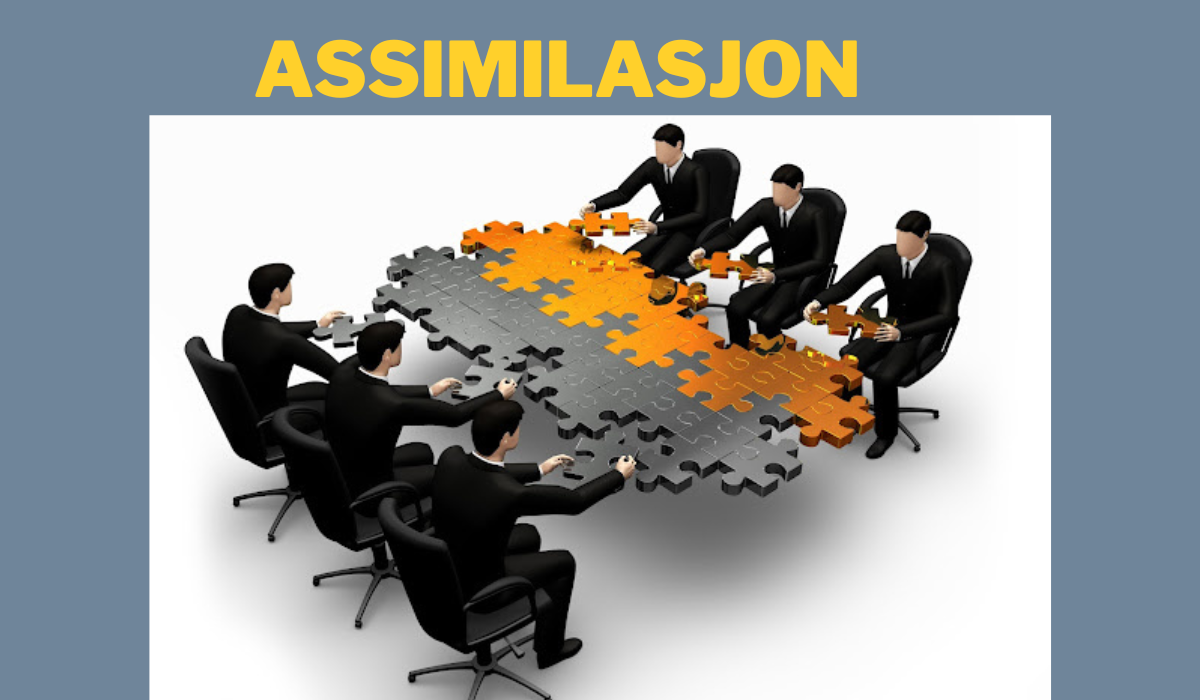When people move to new countries or when different cultural groups come into contact, one of the most significant processes they may experience is assimilasjon—the Norwegian term for assimilation. This complex social phenomenon involves individuals or groups adopting the cultural norms, values, and behaviors of a dominant or host society, often at the expense of their original cultural identity.
Assimilasjon goes beyond simply learning a new language or following local customs. It represents a fundamental transformation in how people see themselves and their place in society. For some, this process occurs naturally and voluntarily as they seek to integrate into their new environment. For others, it may be imposed through policies or social pressure, leading to the gradual erosion of their ancestral heritage.
Understanding assimilasjon requires examining its historical roots, various forms, and the profound impact it has on both individuals and communities. As our world becomes increasingly interconnected, questions about cultural identity, belonging, and the balance between unity and diversity become more pressing than ever.
This comprehensive exploration will examine the multifaceted nature of assimilation, from its historical manifestations to contemporary examples, while considering both its benefits and its potential costs to human cultural diversity.
Historical Context of Assimilasjon
Throughout history, assimilasjon has occurred through various means and contexts, often reflecting the power dynamics between different cultural groups. Ancient empires frequently employed assimilation strategies to maintain control over conquered territories. The Roman Empire, for instance, encouraged local populations to adopt Roman customs, language, and legal systems while allowing some preservation of local traditions.
Colonial periods marked some of the most systematic and often forceful examples of assimilasjon. European colonizers implemented policies designed to replace indigenous cultures with European norms. In Australia, the “White Australia” policy and the forced removal of Aboriginal children from their families—known as the Stolen Generations—represents one of the most tragic examples of forced assimilation in modern history.
Similarly, in North America, Native American children were often sent to boarding schools where they were forbidden from speaking their native languages or practicing traditional customs. The motto “Kill the Indian, Save the Man” exemplified the destructive nature of forced assimilasjon during this period.
The 20th century witnessed both the continuation of assimilation policies and growing resistance to them. Immigration waves to countries like the United States, Canada, and Australia brought millions of people who faced pressure to assimilate into the dominant culture. Some embraced this process as a pathway to opportunity, while others struggled to maintain their cultural identity.
Types of Assimilasjon
Assimilasjon manifests in several distinct forms, each affecting different aspects of an individual’s or group’s identity and social experience.
Cultural Assimilation
Cultural assimilasjon involves adopting the language, customs, traditions, and values of the dominant society. This process often begins with language acquisition, as communication serves as the foundation for deeper cultural understanding and participation. Over time, individuals may abandon traditional practices, religious beliefs, or cultural celebrations in favor of those prevalent in their new environment.
Food culture frequently serves as both a bridge and a battleground in cultural assimilasjon. While some immigrants may adapt their traditional cuisines to local tastes or ingredients, others may completely abandon their culinary heritage for mainstream alternatives.
Social Assimilation
Social assimilasjon refers to the process of forming relationships and social connections within the dominant society. This includes developing friendships, romantic relationships, and professional networks primarily within the host culture rather than maintaining exclusive ties to one’s ethnic community.
Intermarriage often represents the pinnacle of social assimilasjon, as it creates bonds that transcend ethnic boundaries and frequently results in children who identify more strongly with the dominant culture than with their parents’ heritage.
Economic Assimilation
Economic assimilasjon involves achieving parity in employment opportunities, income levels, and economic mobility compared to members of the dominant society. This process may require acquiring new skills, educational credentials, or professional networks that align with the host country’s economic structure.
Success in economic assimilasjon often depends on factors such as education level, professional background, and the recognition of foreign qualifications by local institutions and employers.
Political Assimilation
Political assimilasjon encompasses participation in the political system of the host society, including voting, civic engagement, and potentially holding public office. This form of assimilation requires not only legal citizenship but also understanding and embracing the political culture and democratic processes of the new country.
Impact on Identity
The process of assimilasjon profoundly affects both individual and collective identity, often creating complex psychological and social dynamics.
Language and Communication
Language serves as perhaps the most visible marker of assimilasjon. As individuals become more proficient in the dominant language, they may experience a gradual shift in their thinking patterns, cultural references, and emotional expression. Research suggests that people may even develop different personality traits when communicating in different languages.
For many families, language becomes a source of intergenerational tension. Parents may struggle to maintain their native language at home while children become increasingly dominant in the host country’s language, leading to communication barriers and cultural disconnect within families.
Traditional Practices and Beliefs
Assimilasjon often requires individuals to navigate conflicts between their traditional beliefs and the norms of their new society. Religious practices, gender roles, family structures, and child-rearing approaches may all come under pressure to conform to dominant cultural expectations.
Some individuals find ways to adapt their traditions to fit their new environment, creating hybrid practices that honor their heritage while acknowledging their new reality. Others may feel compelled to abandon these practices entirely, leading to feelings of loss and disconnection from their roots.
Cultural Memory and Heritage
As assimilasjon progresses across generations, cultural memory may fade. Stories, traditions, and historical knowledge that once defined a community’s identity may be lost as younger generations become increasingly integrated into the dominant culture.
This loss of cultural heritage raises important questions about the value of diversity and the responsibility of societies to preserve the rich tapestry of human cultures within their borders.
Contemporary Examples
Modern examples of assimilasjon can be found across the globe, each reflecting unique circumstances and outcomes.
European Immigration and Integration
European countries have grappled with assimilasjon policies as they welcome immigrants from diverse backgrounds. France’s approach to laïcité (secularism) requires immigrants to adopt secular values and often abandon visible religious symbols in public spaces. This policy has sparked debate about the balance between integration and religious freedom.
Germany’s experience with Turkish immigrants demonstrates the complexities of assimilasjon over multiple generations. While many Turkish families have successfully integrated into German society, others maintain strong connections to their homeland culture, creating distinct Turkish-German communities.
Asian Immigration to Western Countries
The experiences of Asian immigrants in countries like Australia, Canada, and the United States illustrate varying degrees of assimilasjon success. Many Asian immigrants have achieved remarkable economic assimilation while maintaining strong cultural ties to their heritage countries.
The concept of “model minorities” has emerged to describe certain Asian communities that appear to have successfully assimilated economically and socially while maintaining some cultural distinctiveness. However, this label also obscures the challenges and discrimination these communities may face.
Indigenous Peoples and Modern Assimilasjon
Contemporary indigenous communities continue to navigate the tension between preserving their cultural identity and participating in modern nation-states. Many indigenous groups worldwide work to revitalize their languages, traditions, and governance systems while also engaging with modern economic and political structures.
The concept of “cultural revitalization” represents a counter-movement to historical forced assimilasjon, as indigenous communities reclaim and strengthen their cultural practices.
Benefits and Drawbacks
Assimilasjon presents both advantages and disadvantages that affect individuals, communities, and society as a whole.
Benefits of Assimilasjon
For individuals, successful assimilasjon can provide access to economic opportunities, social mobility, and full participation in civic life. It may reduce discrimination and social barriers while opening doors to education, employment, and social relationships.
From a societal perspective, assimilasjon can promote social cohesion, reduce ethnic tensions, and create a shared sense of national identity. Countries with strong assimilation processes may experience less social fragmentation and more effective governance.
Assimilasjon can also facilitate communication and cooperation across different groups, creating more efficient economic and social systems. When people share common languages, values, and cultural references, collaboration becomes easier and more productive.
Drawbacks of Assimilasjon
The costs of assimilasjon are equally significant. For individuals, the process may involve psychological stress, identity confusion, and the loss of meaningful cultural connections. Many people experience grief and trauma as they abandon aspects of their heritage identity.
Families may suffer as different generations assimilate at different rates, creating communication barriers and value conflicts within households. Children may struggle with divided loyalties between their parents’ culture and their peer group’s expectations.
From a broader perspective, extensive assimilasjon leads to the loss of cultural diversity, which represents an irreplaceable human resource. Languages, traditions, knowledge systems, and artistic expressions disappear, impoverishing the overall cultural landscape.
Forced assimilasjon, in particular, violates human rights principles and can cause lasting trauma to communities. The psychological and social damage from coercive assimilation policies may persist across generations.
Alternatives to Assimilasjon
Recognizing the limitations and costs of traditional assimilation approaches, many societies have developed alternative models for managing cultural diversity.
Integration Models
Integration differs from assimilasjon by encouraging immigrants and minority groups to participate fully in society while maintaining their cultural identities. This approach recognizes that people can be loyal citizens and productive members of society without abandoning their heritage.
Successful integration policies provide language education and civic instruction while respecting cultural differences and religious practices. Countries like Canada and Sweden have implemented integration models that aim to balance social cohesion with cultural diversity.
Multiculturalism
Multiculturalism goes further than integration by actively celebrating and supporting cultural diversity. This approach views cultural differences as valuable assets rather than obstacles to social harmony.
Australia’s multicultural policies, for example, provide funding for community cultural centers, ethnic media, and heritage language education. This model assumes that a diverse society is stronger and more innovative than a homogeneous one.
Cultural Pluralism
Cultural pluralism represents the most radical alternative to assimilasjon, advocating for the maintenance of distinct cultural communities within a larger society. This approach acknowledges that different groups may prefer to maintain separate institutions while participating in common economic and political systems.
Belgium’s linguistic communities and Switzerland’s canton system demonstrate how cultural pluralism can work in practice, allowing different groups to maintain their distinctiveness while sharing national citizenship.
Case Studies in Assimilasjon
The Sami People of Northern Europe
The Sami people of Norway, Sweden, Finland, and Russia provide a compelling case study in both forced assimilasjon and cultural revitalization. For centuries, Scandinavian governments implemented policies designed to assimilate the Sami into the dominant Nordic cultures.
Children were forbidden from speaking Sami languages in schools, traditional reindeer herding practices were restricted, and Sami religious beliefs were suppressed. These policies nearly succeeded in destroying Sami culture entirely.
However, beginning in the 1960s, Sami activism led to a remarkable cultural revival. Today, Sami languages are taught in schools, traditional practices are legally protected, and Sami parliaments have been established in several countries. This case demonstrates both the destructive power of forced assimilasjon and the possibility of cultural recovery.
Japanese-Americans During World War II
The internment of Japanese-Americans during World War II created unique pressures for assimilasjon. Despite being American citizens, Japanese-Americans faced suspicion and discrimination that intensified during the war.
The experience of internment camps paradoxically both strengthened Japanese-American cultural identity and accelerated assimilation. Many Japanese-Americans emerged from the camps determined to prove their loyalty through complete assimilasjon, often at the cost of their cultural heritage.
Subsequent generations of Japanese-Americans have worked to recover lost cultural knowledge while maintaining their American identity, illustrating the complex intergenerational effects of traumatic assimilasjon experiences.
Turkish Immigration to Germany
The Turkish community in Germany represents Europe’s largest immigrant population and provides insights into long-term assimilasjon processes. Beginning in the 1960s as “guest workers,” many Turks remained permanently and established thriving communities.
Different Turkish families have pursued varying assimilasjon strategies. Some have fully integrated into German society while maintaining cultural connections to Turkey. Others have created parallel societies with limited German cultural contact.
Third and fourth-generation Turkish-Germans now navigate complex identity questions, often feeling neither fully Turkish nor fully German. This experience highlights the ongoing challenges of assimilasjon in multicultural societies.
The Future of Assimilasjon in a Globalized World
As our world becomes increasingly interconnected, traditional concepts of assimilasjon face new challenges and opportunities. Global communication technologies allow people to maintain connections with their heritage cultures regardless of their physical location, potentially slowing or complicating assimilation processes.
Climate change and economic disruption are likely to create new migration patterns that will test existing assimilasjon and integration models. Societies will need to develop more flexible and humane approaches to managing cultural diversity while maintaining social cohesion.
The rise of transnational identities and global citizenship concepts may ultimately make traditional assimilasjon obsolete. Future societies may need to embrace more fluid and dynamic approaches to cultural identity that recognize people’s capacity to maintain multiple cultural affiliations simultaneously.
Educational institutions, policymakers, and community leaders must work together to develop approaches that honor both the legitimate need for social cohesion and the fundamental human right to cultural identity. The success of future societies may depend on their ability to create inclusive spaces where diversity strengthens rather than divides communities.
References and Further Research
Understanding assimilasjon requires ongoing research and dialogue across multiple disciplines. Sociologists, anthropologists, psychologists, and political scientists all contribute valuable perspectives to this complex topic.
Academic institutions worldwide conduct research on assimilation processes, offering insights into successful integration strategies and the long-term effects of different policy approaches. Organizations like the United Nations and UNESCO provide frameworks for understanding cultural rights and the importance of diversity preservation.
Community organizations and advocacy groups also play crucial roles in documenting assimilasjon experiences and developing support systems for people navigating cultural transitions. Their work provides essential ground-level perspectives on the human impact of assimilation policies and practices.
Future research should focus on developing more nuanced understanding of how people can maintain cultural identities while participating fully in diverse societies. This work will be essential for creating more just and inclusive communities in our interconnected world.





